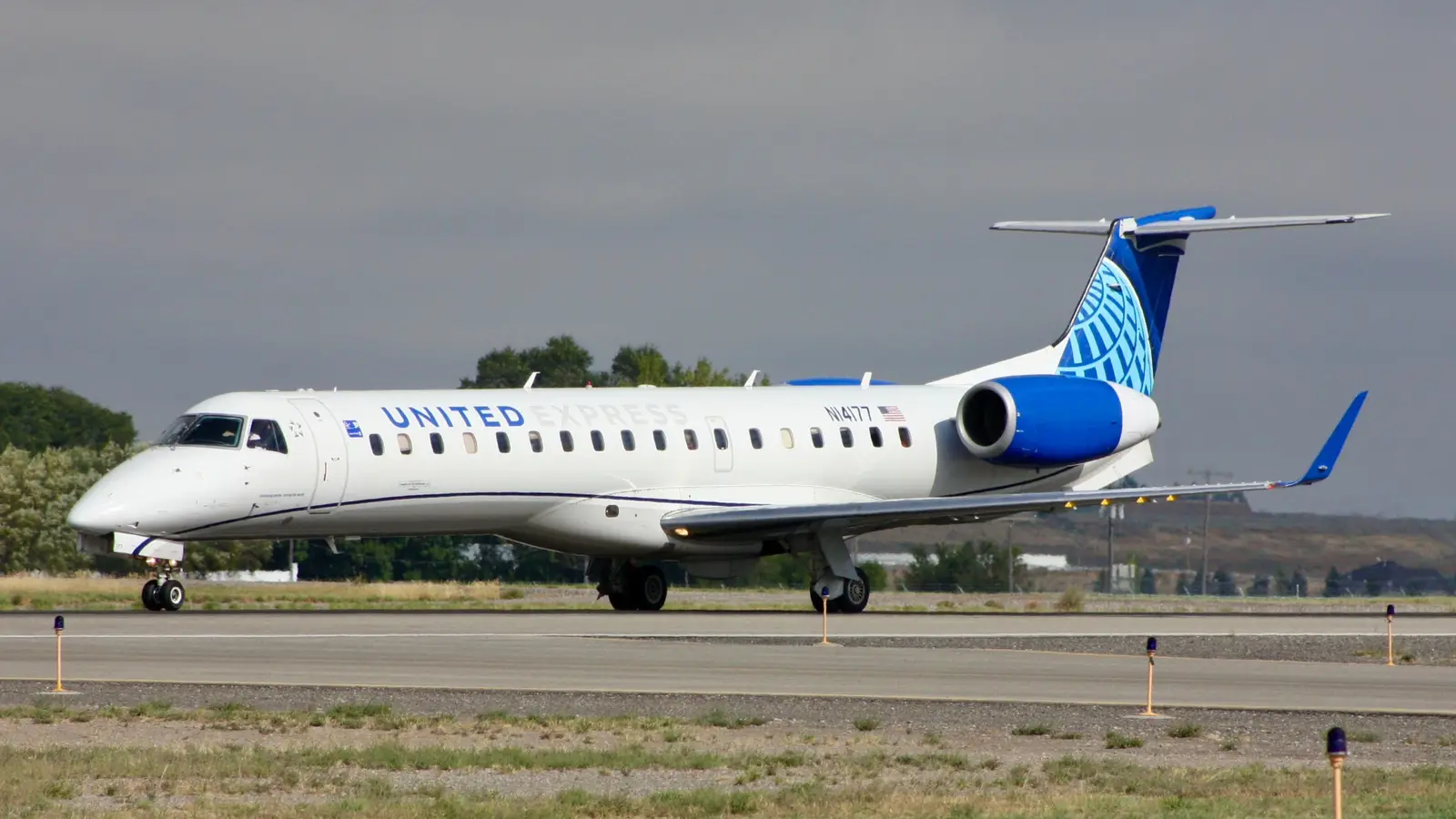
On Wednesday night, a United Express Embraer ERJ-145 went off the runway while landing at Roanoke-Blacksburg Regional Airport in Virginia. The flight, operated by CommuteAir on behalf of United Airlines, had departed Washington Dulles with 50 passengers and three crew members on board.
The jet came to a stop in a safety system installed beyond the runway, which prevented the situation from escalating into a more serious accident. No injuries were reported, though operations at the airport were briefly halted as officials responded to the incident. Several scheduled flights were delayed until the following morning.
United Express Flight UA4339 Overran Runway 34
An Embraer ERJ-145, registration N21129, was operating United Express flight UA4339 from Washington Dulles International Airport to Roanoke. According to Flightradar24, the flight typically departs at 17:30 local time and lands in Roanoke around 18:44. On this occasion, however, the aircraft left Dulles later than scheduled at 20:35 and touched down in Virginia just after 21:15.
The aircraft landed on runway 34 but overran due to wet conditions. The Federal Aviation Administration (FAA) said the jet eventually came to a stop in the engineered materials arrestor system (EMAS), which is designed to stop aircraft that run off the runway. Images shared on social media showed deep gouges created by the ERJ-145’s wheels in the arrestor bed.
Passengers were deplaned via portable stairs and transported by bus to the terminal. Runway operations at Roanoke were suspended briefly, which led to multiple delays and diversions. For instance, United Express flight UA4792 from Chicago, which was due to land at 21:19, diverted to Charlotte Douglas instead. The extent of damage to the aircraft remains under review, and the FAA has confirmed it is investigating the incident.
What Is An Engineered Materials Arrestor System?
EMAS is a bed of crushable concrete blocks placed at the end of a runway to stop aircraft that cannot come to a halt. The material breaks apart under the weight of the wheels, which creates drag that slows the aircraft to a safe stop. It is used to protect against overruns, undershoots, or veer-offs that could otherwise lead to serious accidents.
As of March 2025, there are 122 EMAS systems in place at 70 airports across the United States. FAA data shows that the technology has safely stopped 24 aircraft and has protected 438 passengers and crew. In addition, across the country, 118 runway ends are equipped with EMASMAX, the latest version of the technology, while four runway ends use the alternative greenEMAS system.
Runway Safe is the only company authorized to manufacture EMAS products that meet FAA standards. It produces both EMASMAX, the more durable block-based version, and greenEMAS, which incorporates recycled materials. Alongside this, the FAA has also led runway safety improvements at more than 500 commercial airports, which include enhancing safety areas at roughly 1,000 runway ends, often by incorporating EMAS technology.
Two Business Jets Recently Stopped by EMAS In Separate Incidents
Earlier this month, on September 3, two business jets were stopped by EMAS at separate US airports on the same day. The first involved a Bombardier Challenger 300, registration N776CJ, operated by Jet Linx Aviation. The aircraft was flying from Las Vegas Harry Reid International Airport to Boca Raton when it overran runway 05.
It came to a stop in the EMAS near a busy intersection. There were four people on board, and no injuries were reported. The second incident occurred at Chicago Executive Airport with a Gulfstream G150, registration N1927G, operated by Priester Aviation.
The jet had been flying from Baltimore/Washington International Thurgood Marshall Airport with two people on board. After touching down, it failed to stop before the runway end, went through a fence, and was brought to a halt by the EMAS bed. Both crew escaped without injury, though the airport was closed temporarily while the aircraft was removed.



